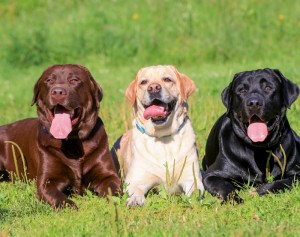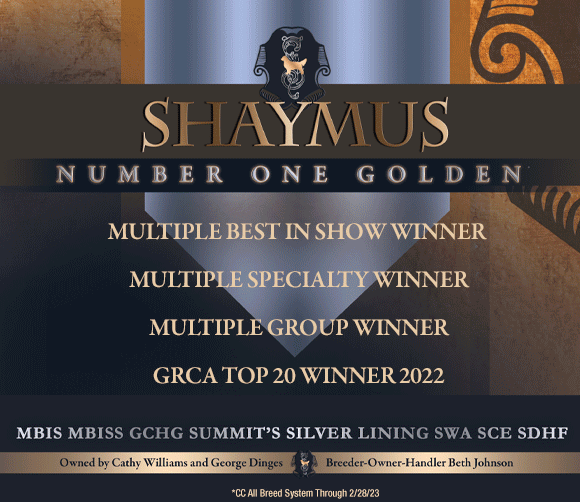Behavioral Differences in Social Cognition, Inhibition and Spatial Problem-solving Ability Between 13 Breeds
By Caroline Coile
 Researchers in Finland compared more than 1000 dogs of 13 breeds (each breed had to have at least 40 dogs to be included) on a variety of tests. The 13 breeds were Australian Kelpie, Australian Shepherd, Belgian Malinois, Border Collie, English Cocker Spaniel, Finnish Lapphund, German Shepherd Dog, Golden Retriever, Hovawart, Labrador Retriever, Shetland Sheepdog, Spanish Water Dog and Mixed Breeds.
Researchers in Finland compared more than 1000 dogs of 13 breeds (each breed had to have at least 40 dogs to be included) on a variety of tests. The 13 breeds were Australian Kelpie, Australian Shepherd, Belgian Malinois, Border Collie, English Cocker Spaniel, Finnish Lapphund, German Shepherd Dog, Golden Retriever, Hovawart, Labrador Retriever, Shetland Sheepdog, Spanish Water Dog and Mixed Breeds.
The study, published in the prestigious journal Nature, compared the breeds on the following tests, using the Labrador as their statistical reference breed (that is, the “norm” against which other breeds were compared statistically).
- Greeting a stranger (in which dog’s reactions—either fearful, indifferent, friendly or overexcited—were recorded. Aggressive dogs were not included). Result: Goldens Retrievers were the friendliest, and Australian Kelpies the most overexcited. The only two breeds whose reactions were statistically different than the reference Lab breed were the Shetland Sheepdog and Spanish Water Dog, both of which were significantly less likely to be overexcited and more likely to be fearful, with Shelties the most fearful of the 13 breeds tested.
- Activity level (as measured by an activity monitoring collar throughout the remaining tests). Result: The Belgian Malinois was significantly more active, and Mixed Breeds, Golden Retrievers, Finnish Lapphunds, Shetland Sheepdogs and especially, Hovawarts, significantly less active than Labs.
- Exploration level (or how much a dog explored the novel environment). Result: The English Cocker Spaniel explored the most, with the Finnish Lapphund and Shetland Sheepdog exploring significantly less than the reference Labrador Retriever.
- Cylinder test (in which a dog must refrain from reaching directly for a reward and instead go around a clear barrier to reach it). Result: The Labrador Retriever was the worst at this test, with the Border Collie best. Border Collies, Mixed Breeds, Australian Shepherds, Golden Retrievers, and Spanish Water Dogs all scored significantly better than Labs.
- Human gestures (how well dogs followed directions indicated by people pointing, facing or gazing). Result: Belgian Malinois were best at this test, followed by Australian Kelpies, then Labs, then Border Collies. Mixed Breeds, German Shepherd Dogs and Finnish Lapphunds were significantly worse.
- V-detour (in which the dog has to move around a clear V-shaped fence to reach a reward on the other side). Result: Although the Belgian Malinois scored best, and the Golden Retriever worst, most dogs did solve the problem within the 3 minutes allotted. When the time it took to solve it was compared, the Golden and Lab were slowest and the Malinois and Border Collie fastest, with the Border Collie statistically significantly faster than the reference breed Lab.
- Unsolvable task (in which the dog was presented with a task that could not be solved after previously being solvable, in this case a box in which a lid could no longer be displaced. Dogs were scored for time spent on trying to open it, turning to a human for help, or giving up altogether). Result: Looking at the percentage of times dogs turned to humans for help, German Shepherds and Belgian Malinois did so the least, and Goldens the most, but no breed was statistically different from the reference Labrador breed. Looking at total time spent on human-dependent versus human-independent behavior, the Australian Kelpie and Golden Retriever were most dependent on humans (and significantly more so than the Lab), followed by the Australian Shepherd and Border Collie. The Hovawart, Finnish Lapphund and Spanish Water Dog spent the least time looking for human-directed help. The breeds most likely to give up were the English Cocker Spaniel, Golden Retriever and Australian Kelpie; least likely were the Spanish Water Dog, Border Collie and Australian Shepherd.
- Logical reasoning (in which dogs learned that one of two upended bowls always held a treat; then the person held one bowl up in the air so the dog could see it did not hold a treat. The number of times the dog inferred the other bowl must hold the treat since the first one didn’t was recorded). Result: Although the differences were not statistically significant, the Belgian Malinois and German Shepherd had the highest percentage of dogs able to solve the task, and the Golden Retriever and Australian Kelpie the lowest.
- Memory versus gesture (in which a person pointed to the obviously empty bowl instead of the bowl the dog just saw filled with the reward, with dogs scored on whether they followed the human gesture or relied on their own memory). Result: The Cocker, Malinois and Border Collie were most likely to trust human gestures over their own memory, while the Hovawart and German Shepherd were most likely to ignore the human gesture. The Hovawart was the only breed to score significantly different from the Lab on this task.
- Memory (in which dogs were required to remember which of four bowls they saw holding a treat after a barrier blocked their view for up to 2.5 minutes). Result: No significant differences between breeds were found.
The authors concluded that significant behavioral differences between breeds exist, and these differences can be explained by past and current uses of those breeds. For example, the Border Collie and Australian Shepherd scored high, and Malinois and GSD low, in a test measuring inhibitory control (cylinder test). Border Collies and Aussies need such inhibition in order to control livestock and not just run after them. Malinois and GSDs need to be highly responsive with less inhibition to perform their police and military duties. They also need to work more independently compared to most breeds, as evidenced by their low scores on human-directed behavior and social abilities, compared to the Golden, Aussie, Kelpie and Border Collie, all of which whose jobs require them to follow human direction.
Not everything was so clear. The Finnish Lapphund received the lowest score in the gesture tests, whereas the Kelpie and Malinois had the highest scores for this test, despite all three being herding breeds. Similarly, during the unsolvable task, the Australian Shepherd was the least likely breed to abandon the task, whereas the Kelpie was among the breeds most likely to abandon the task. The Golden Retriever differed significantly from the Labrador Retriever in the unsolvable task and the gesture test, even though both belong to the retriever group. The authors concluded that breed and modern usage, not group or original usage, was a more reliable predictor of behavior.
Where does your dog fit in? These tasks can be easily replicated at home, and the study includes videos of dogs performing each one. This could make for a fun and informative kennel club activity! See the videos at the end of the article.
Junttila, S., Valros, A., Mäki, K. et al. Breed differences in social cognition, inhibitory control, and spatial problem-solving ability in the domestic dog (Canis familiaris). Sci Rep 12, 22529 (2022). https://doi.org/10.1038/s41598-022-26991-5
Short URL: http://caninechronicle.com/?p=259905
Comments are closed












